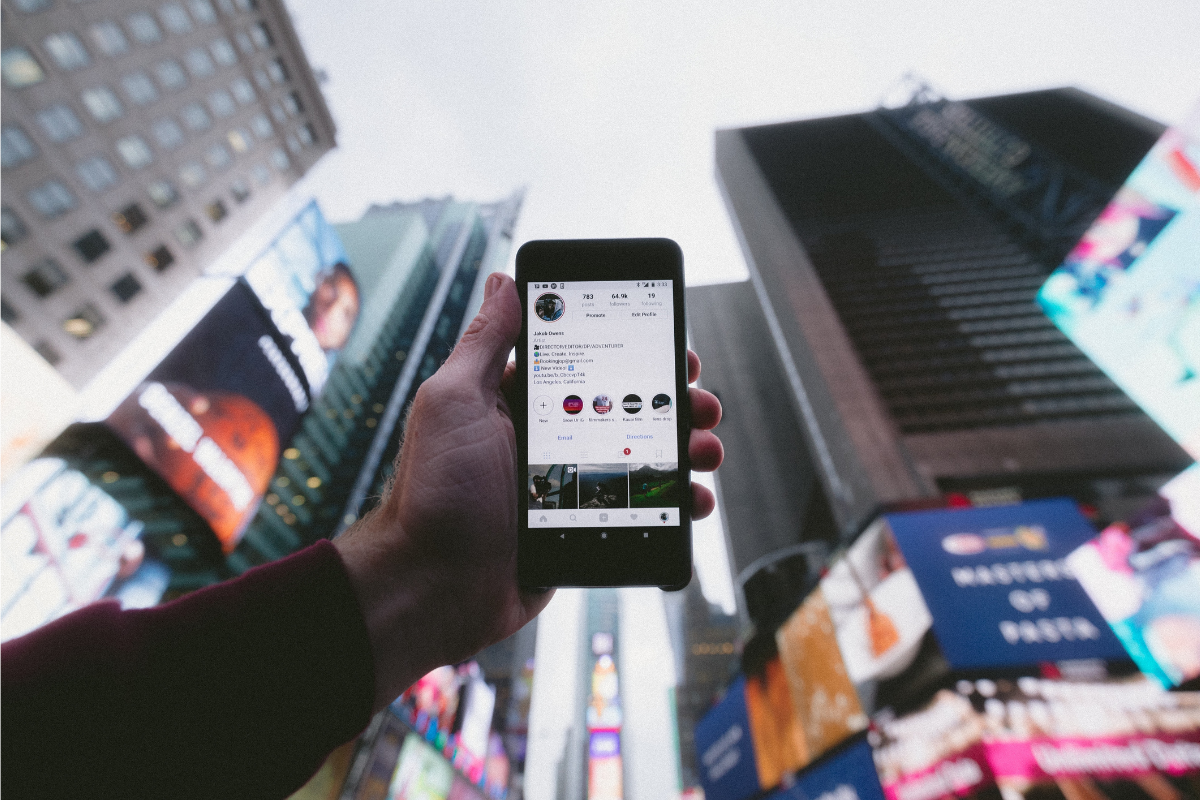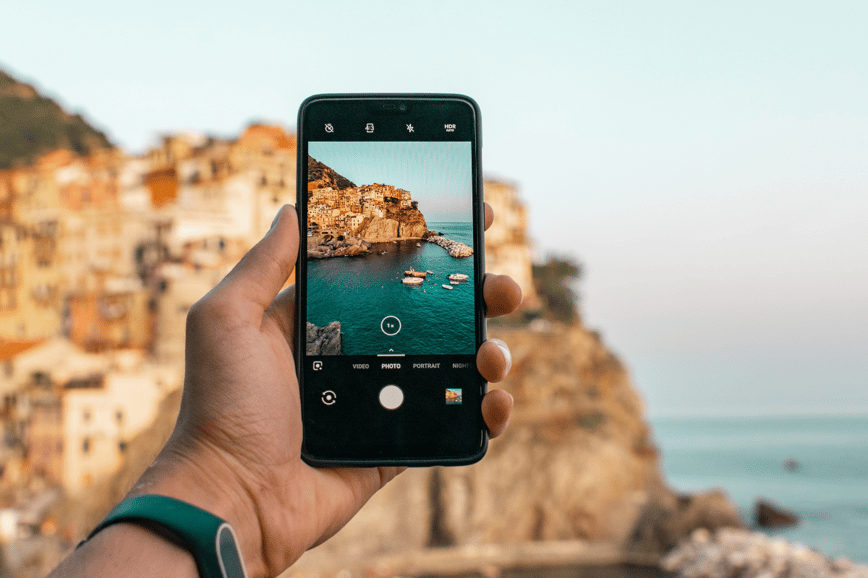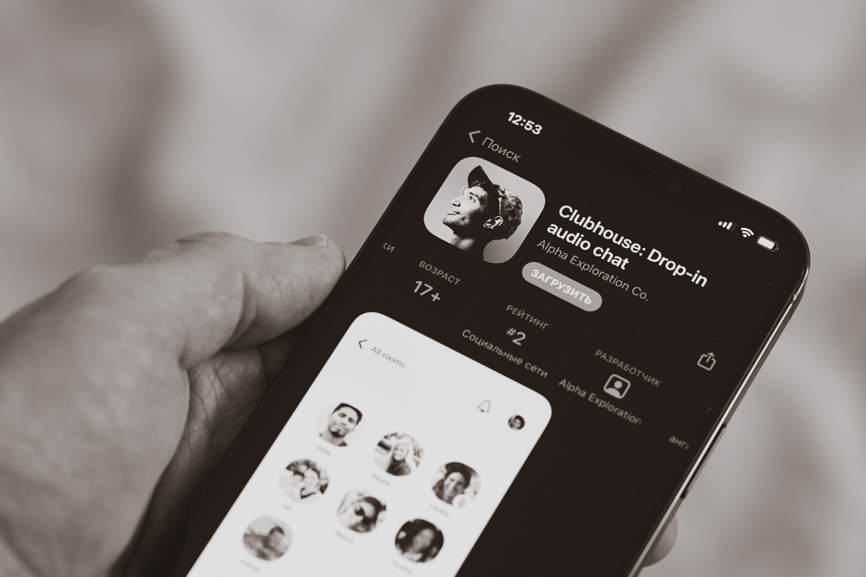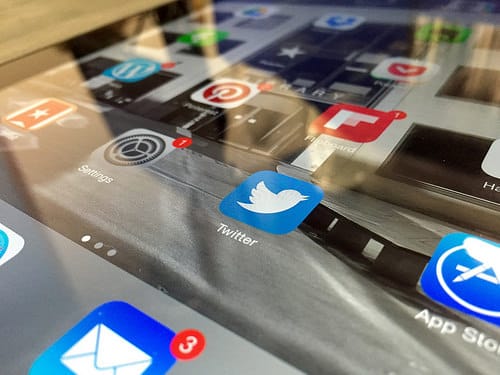Top 5 eCommerce Digital Marketing Programs to Increase Sales
Want more sales? Learn the top five eCommerce digital marketing and social media programs to increase website traffic and boost online revenue.
10 min read
 Tim Bucciarelli
:
July 12, 2021
Tim Bucciarelli
:
July 12, 2021

If you're not using social media to market your brand, you're missing out. According to SEMRush, 94% of marketers use social media for content distribution, and for good reason. With billions of monthly active users on Facebook, YouTube, and Instagram, there are so many people to target一not to mention newcomers like TikTok and Clubhouse. Capitalizing on just a minuscule fraction of those audiences could make a dramatic impact on your eCommerce revenue, engagement, site traffic, and brand awareness. Below, we take a look at the top ten elements to incorporate in your social media marketing strategy.
As you think about attracting customers on your social media channels, focus on building an authentic voice rather than being "salesy." Where possible, craft your posts with a conversational tone, as if you're talking with a friend or family member. Inform your audience of standout product features or tips to make your product work better for their lifestyles. Shine a spotlight on poignant customer stories and testimonials, and make a point to interact with your audience by asking for their input and responding to their comments.
That said, you can't make one post, respond with generic comments, and call it a day. Your social media has to be consistently genuine and heartfelt.
In that vein, don't forget about current events. Failing to remark on some of the most significant issues in our society can seem tone-deaf. Consumers want to know what your company is doing to make the world a better place. You can do this either through direct statements, customer interviews, or even customer-generated content (with their permission). It is also a good idea to highlight any corporate social responsibility initiatives around specific holidays or days of remembrance.
Everyone wants to get the most bang for their buck, and there's no better way to do that than by posting similar content on multiple channels. And when you post this content at the optimal time, you can increase post reach, prompt engagement, grow website traffic, and amplify brand discovery.
However, the optimal time to post on one channel may be completely different than another. As part of your social media eCommerce marketing strategy, scheduling posts at the most optimal times can easily be managed with publishing tools such as Hubspot, Sprout Social, or Buffer. Let's take a look at the best times to post on each channel:
Even the most compelling social media content may not be enough to establish a substantial organic presence and grow your audience base. To get your content in front of as many potential customers as possible and to beat finicky algorithms, you need an innovative paid social media strategy.
It's best to take a data-driven approach by evaluating your paid social budget, determining your target audiences, and optimizing your ads daily to achieve a high return on ad spend (ROAS). Content matters. Therefore, it's important to implement A/B testing for images, ad copy, CTAs, and custom audiences to determine which social media channels generate the most high-quality leads or eCommerce conversions.
Currently, the most effective paid social platforms are Facebook, Instagram, and LinkedIn. However, paid social on Facebook and Instagram is becoming more competitive and costly, thereby making it more challenging to achieve a high ROAS.
This year, Apple has instituted a change where users must give permission and opt in to sharing tracked information with other companies and brands. For Facebook, this limits the data they can receive and process, particularly conversion events from tools like the Facebook pixel. Even though this reduces reporting capabilities, they've rolled out Aggregated Event Measurement, which still preserves user privacy while running effective campaigns.
A #hashtag is a short phrase or word used to categorize posts on social media channels. With millions of posts being published across social platforms each day, it's challenging to stand out from the crowd. Utilizing Instagram hashtags should be a vital part of your organic social media marketing strategy to increase post reach and brand discovery.
Hashtags enable your posts to be seen by more users, which increases the number of engagements and will help grow your social media audience. Additionally, Instagram allows users to follow #hashtag feeds, so your post will be seen by every account that follows the specific hashtag. In fact, posts with at least one hashtag average 12.6% more engagement on Instagram. It's essential to use a variety of hashtags (a mix of broad and specific) since many other accounts may be leveraging the same ones.
Hashtags like #fitness are associated with millions of posts (458m posts). More targeted "niche" hashtags like #fitnessdedication (165k posts) or #fitnessbloggers (123k posts) can help boost post discovery and attract new customers. Since more narrow hashtags have less competition, you increase the chances of your post being seen in the hashtag feed.

Capturing your audience's attention by showing a gorgeous setup at a wedding venue or the #OOTD (outfit of the day) are great ways to attract potential customers. And Instagram Stories and Reels are excellent vehicles for short-form video. Stories are 15 seconds long and disappear 24 hours after you post. There are 500 million daily active Instagram Stories users worldwide. But to get your Stories noticed before they disappear, you need high-quality, captivating video.
As part of your content marketing strategy, brainstorm new ways to exhibit your products' best characteristics, such as walking your audience through a recipe featuring a product or showcasing a recent home renovation by your interior design firm. In addition to music, you may want to add text to your Stories to attract the attention of users who scroll the IG with the sound off.
While showcasing your products is one way to utilize Stories, you can also use them to gather customer feedback with polls or questions. These features offer two opportunities for user engagement一one when filling out the polls and another when reacting to results.
Reels are very similar to Stories, but instead of disappearing, they serve as a 15-30 second mainstay on your page. Since Reels are more of an evergreen feature, you should spend more time and effort on crafting highly-sharable video content. Many brands opt to recreate TikTok trends in a way that accentuates their product or brand.
To amplify brand reach and reach new users, encourage your followers to share your Reel on their own Instagram Stories. It's widely known that Instagram favors accounts that utilize Reels. Using this social media content strategy will help boost brand discovery, increase engagements, and grow your audience. An eCommerce digital marketing agency can help you develop engaging, short video content that fits your overall content marketing strategy.
In the world of social media, a day rarely goes by without watching at least one video on your phone or computer. For brands, having a library of engaging video content should be the baseline. Video brings more traffic to your site, enhances lead generation, and helps customers better understand your product or service.
Beyond the production and publishing of video content, consumers want to interact with a brand in real-time. Live, interactive content became especially common during the pandemic since people could not attend in-person events. Instagram Live, YouTube Live, YouTube Premiers (recorded content with live Q&A), and Facebook Live allow you to authentically engage with your audience and answer customer questions.
By connecting with your customers in the moment, you give them a chance to get to know the people behind the brand. Additionally, live content gets pushed up in the social media algorithm, increasing your brand reach. Plus, you can save live recordings and repost across social media and longer-form content channels such as email, blog posts, and landing pages. To expand your library of video content, you can also create video mashups of Instagram Reels, TikTok, and Snapchat.
Facebook and its child company, Instagram, have realized the power of eCommerce. Over the past few years, they've introduced shopping tools on their platforms that allow consumers to buy products straight from a post or Story. But that's not all. Users can also shop live一think of it as QVC for online shopping. Someone from your company or an influencer presents a product during a live stream. As they showcase the product, consumers can click on the product link and checkout without ever leaving the app.
Instagram and Facebook Shopping act as your storefront (if you don't have an online store) or an additional marketplace. Since 54% of social media users research products using social media and 71% make a purchase based on a referral, there's no better way to lead them straight to the source than social shopping. In addition, social shopping instantly magnifies traffic, reduces shopping cart abandonment, and thus boosts potential eCommerce revenue.
Facebook also has tools that help customers find your Shop with highly personalized ads. With Facebook Discovery Commerce, you can offer a seamless shopping experience, reach your target audience, and discover new ones. On the backend, Discover Commerce provides insights on your marketing efforts to help optimize performance and ensure your ad dollars are bringing in the most leads possible.
To excel at content marketing, you need to publish consistent, relevant content. But churning out original content day after day can be a slog. That's where snackable content comes into play. While long-form content such as blogs and dedicated landing pages won't be going away any time soon, you can break up content into smaller, digestible chunks to published across social and other digital media channels.
Within the crowded digital media landscape, capturing the attention of your customer becomes even more challenging. For example, people may not have the time to read a 3,000-word blog post (like this one!). However, repurposing short snippets of content on social media and then continuing the conversation in longer form email campaigns or landing pages can reinforce your core messaging and storytelling.
Snackable content also gives you the chance to reinforce your brand's voice and tone. And since you're taking bits and pieces from long-form content based on SEO keywords, your snackable content will be in line with your overall content and SEO strategies. A word of warning: no matter what content you're creating, it must always be high-quality and highly valuable. Irrelevant content will bore readers, and they'll take their attention elsewhere.
Macro-influencers (100K to 1M followers) can act as the modern-day athlete or actress endorsement for a brand. Since these individuals have over a hundred thousand or millions of followers, they have a sizable reach. If you are lucky enough to get just one of them to share your products, it'll have a dramatic effect on your audience growth and eCommerce product sales.
However, the key is to find authentic influencers who are true evangelists of your brand. To build an effective influencer program, brands aligned with micro-influencers (10K to 100K followers), who tend to have a more "engaged" audience, will see a substantial boost in brand discovery. In addition, Instagram users with over 10,000 followers have access to the swipe-up feature in Stories, which allows them to showcase your products and send direct traffic to your eCommerce website.
Across social media channels, influencers can expand your brand reach and bring you new customers. By promoting your products and services on Instagram and Facebook through posts, Stories, and live events, you will see an acceleration in audience growth, increased website traffic, and, most importantly, an increase in eCommerce sales.
In conjunction with your influencer programs, a well-executed affiliate marketing program can generate additional revenue for brands. In contrast with influencer programs, which require you to pay a substantial up-front fee, affiliate partners promote your products (for free) and are only paid a commission if a referral results in a sale. Thus, your affiliate partners (publishers) act as an outside sales team for your business. It's a win-win for brands.
Overall, influencer and affiliate marketing programs can increase brand awareness, website traffic, and eCommerce revenue. An experienced digital marketing agency can manage your programs, grow your affiliate publisher base, and significantly boost sales.

Clubhouse is an audio-only social media app akin to a podcast. Speakers can create designated chat rooms and invite others to join the conversation. You can also jump into various rooms and just listen. Although there are several social media channels (and only so much time in the day), you don't want to snooze on Clubhouse.
Because there was less opportunity for informal hangouts or happy hours during COVID-19 lockdowns, Clubhouse has gained a cult following from a wide variety of industries. For brands, you can utilize Clubhouse to host audio-only conversations with various thought leaders, company employees, customers, or influencers to discuss current events, new product releases, etc. Make sure to leave time for live Q&A sessions so you can actively engage with your listeners or answer customer questions.
Clubhouse is tailored for both B2C and B2B companies. However, LinkedIn is rolling out its own version of Clubhouse, which will be a game-changer for B2B companies and service businesses. Thought leadership creators can connect with their community and share valuable tips, discuss whitepapers, and delve into complex topics over audio. Unlike Clubhouse or other audio-only apps, LinkedIn will connect brands and their employees with customers' professional identity, not just their social profile, making them a more legitimate sales lead.
Getting bombarded with inauthentic ads doesn't exactly scream approachable. People want to engage with a brand whose organic social media posts are inviting and relatable. And if a picture is worth 1,000 words, a video is worth 10,000. There's nothing more convincing than a video一especially live video一that puts the benefits of your product on display.
As you formulate your social media marketing strategy, keep your target customer's behavior in mind. Offer bite-sized, snackable content, partner with influencers and affiliate partners who align with your brand's core values, and engage with your audience authentically. In addition to launching organic social media campaigns, look into optimizing your paid social ads to deliver a high return on ad spend (ROAS). By implementing these ten key social media marketing strategies, you can grow your social media audience and ultimately generate more eCommerce revenue.
Of course, putting all ten of these strategies into practice is easier said than done. Thankfully, eCommerce social media marketing agencies can help. Their proven, comprehensive social media strategies can increase brand awareness, strengthen customer loyalty, and boost site traffic. In addition, their experienced team of marketers works with companies across industries to amplify their content and establish winning channel strategies across Facebook, Instagram, LinkedIn, Twitter, Pinterest, YouTube, TikTok, Snapchat, Clubhouse, and more.

Want more sales? Learn the top five eCommerce digital marketing and social media programs to increase website traffic and boost online revenue.

Why You Need Social Media for B2B? Well, the answer is really simple: You want to be on the top of mind of your costumers.

Learn key insights to using data-driven marketing to optimize campaigns, track customer behavior, spot buying trends, and boost eCommerce revenue.